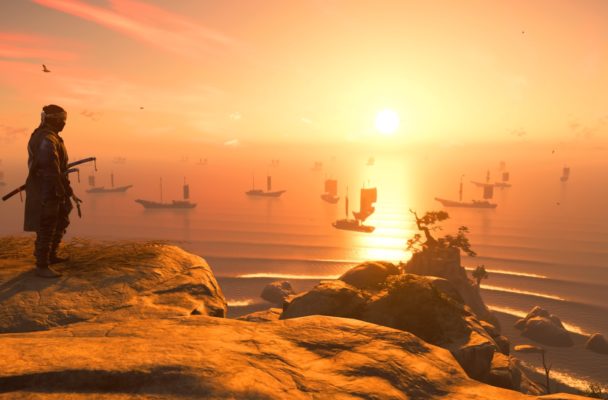‘Ghost of Tsushima’ video game review

“Ghost of Tsushima” takes place in 13th century Japan, and the objective of the game is to stop the Mongolian Empire from overtaking Japan. Photo by GamesRadar
By Noah Stern
Sports Editor
“Ghost of Tsushima” has received great reviews from various sources. This open-world beauty is an amazing game to play for several different reasons. It is a very similar game to “Assassin’s Creed,” a series known for being one of the best video game series available. There are subtle differences in “Ghost of Tsushima” that separate it from being a carbon copy of “Assassin’s Creed.”
Fans of “Assassin’s Creed” have been begging for another installation to be located in Japan, but the “Ghost of Tsushima” developer, Sucker Punch Productions, beat the “Assassin’s Creed” developer, Ubisoft, kept that from happening. “Ghost of Tsushima” is located in 13th century Japan and is all about the Mongolian Empire invading Japan. This was a real event and is one of the best things about these types of games.
People play for fun, but the game can also be extremely informative and educational for those who pay attention to the historical aspects of the game. The player is placed in the game as one of the few remaining samurai in Japan, and the objective is to fight back against the Mongolian invasion and reclaim Japan.
There are many different things to do in the game. It’s the kind of game that people can play for hours. The interesting, fun storyline has plenty of gameplay. While venturing through the story, players encounter hundreds of diverse activities and intriguing side missions, all of which provide materials to help defeat the Mongols.
One of the best things about this game is its beautiful graphics. There are tremendous sunsets, riveting golden forests, beautiful lakes and empowering landscapes all over the map. Many games have exceptional graphics, but few can match the beauty and artistry of “Ghost of Tsushima.” If the weather isn’t ideal for viewing these majestic landscapes, the player can simply play their flute and change the conditions.
The controls of this game are especially easy to learn and manage. Players have to adapt to not having a mini map for guidance. The wind is probably the most unique aspect of this game because it guides the character where to go. This feature allows players to venture off the beaten path, more so than in other open-world games. With the guiding wind and no mini map, it gives players more chances to wander and gather materials that help defeat the Mongols.
Combat fighting is easy to control, but that does not mean it is easy to fight. The game provides obstacles and conflicts for the player to encounter, as well as death in battle, making this game sometimes frustrating to play; however, it motivates the player to never give up. The loading screen after death is one of the quickest restarts in open-world video games, so players can get back up and try again. As great as most of the game is, there are some flaws that need discussing.
Having an abundance of main and side missions gives the player chances to invest plenty of time into this game, but it can become confusing when the player forgets about a mission. If a player is on one mission and switches to another, it can be a hassle to revisit the first mission, after not thinking about it for a long time. The player must jog their memory a bit to remember what was occuring in that particular mission; sometimes, it’s possible to completely forget.
It can also be difficult to climb in this game. There are not many ways to climb rocks or hills, a time-consuming factor for reaching destinations. Sometimes, the game doesn’t allow the character to climb rocks that seem scalable because the character is not in a specific place to do so.
Another flaw involves accessibility to the character’s weaponry. There are not many specifics about the weapons in this game. This is a considerable issue because it is difficult to identify which weapons are best to use against certain enemies. It is also challenging to switch quickfire weapons mid-combat. These flaws are nitpicky features in the game that can be improved upon; however, they don’t make much of a difference when playing the game.
Overall, “Ghost of Tsushima” is an extremely well-made game and should be recommended to anyone who loves open-world video games. There are some issues with the game, and it requires some adapting, but anyone looking for a fun, new game to play should try this one.